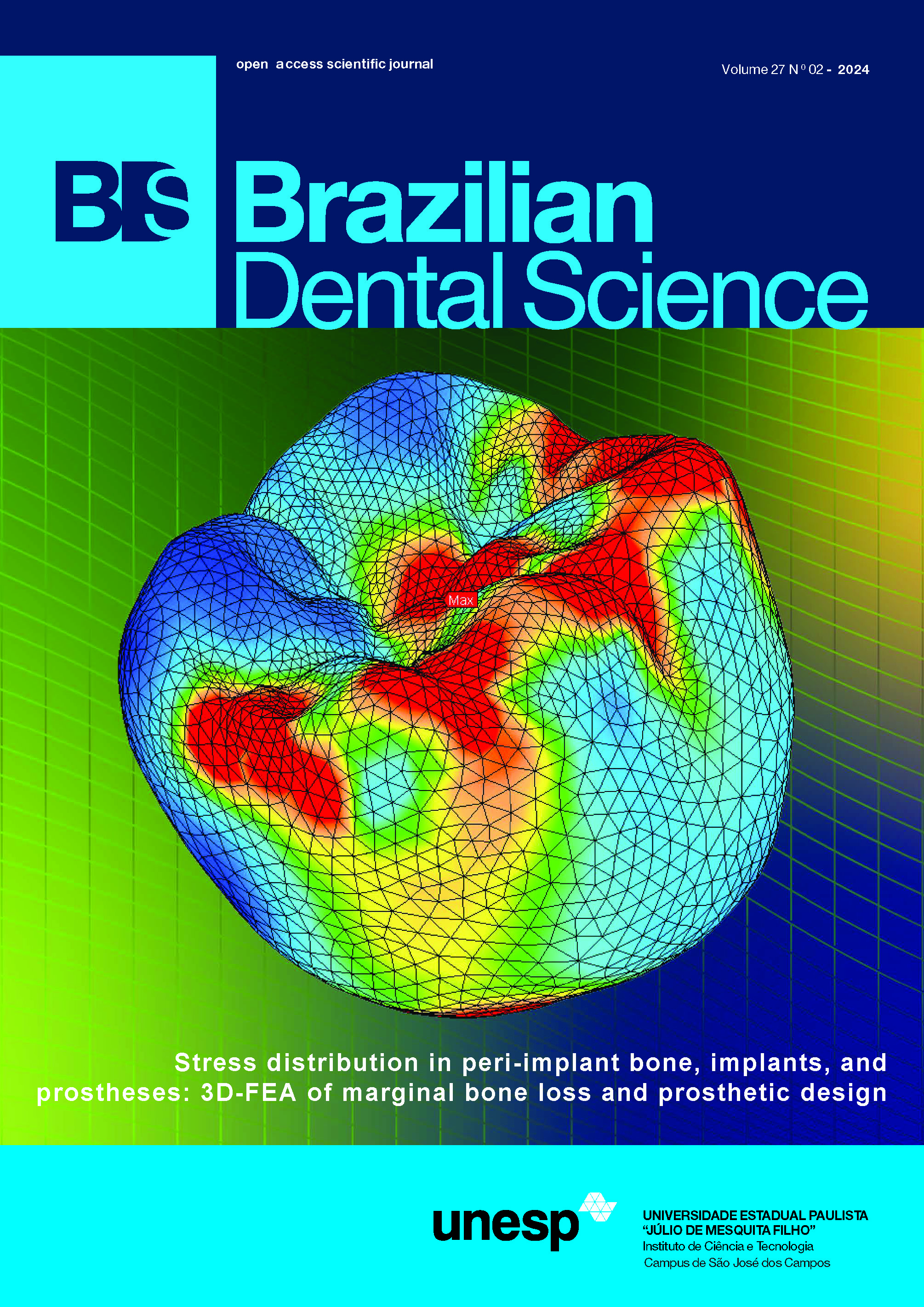Cytotoxic effects of bioceramic materials on stem cells from human exfoliated deciduous teeth (SHED)
DOI:
https://doi.org/10.4322/bds.2024.e4007Abstract
Objective: This study aimed to evaluate stem cell from human deciduous teeth (SHED) viability after exposure to different bioceramic materials. Material and Methods: Discs were constructed to obtain the material extracts according to the following groups: G1 - Bio-C Repair, G2 - MTA Repair HP, G3 - TheraCal LC, and G4 – Biodentine. Positive and negative control group were respectively maintained with alphaMEM + 10% FBS and alphaMEM + 1% FBS. SHED obtained through primary culture were in contact with material extracts for 24, 48, and 72h. MTT assay evaluated cell viability. Groups were plated in triplicate and the cell viability assay were repeated three times. Data were analyzed by two-way ANOVA followed by Tukey test (p<0.05). Results: The treatment and period comparisons showed statistically significant differences (p<0.000). G2 (MTA Repair HP) had greater cell viability values than the other experimental groups and negative control. MTA Repair HP and the control groups exhibited a similar behavior with cell viability values decreasing from 24h to 48h and increasing from 48h to 72h. Bio-C Repair, Biodentine, and Theracal LC did not show statistically significant differences among periods. Conclusions: SHED increased viability values after contact with MTA Repair HP in comparison with other bioceramic materials.
KEYWORDS
Cell viability; Cytotoxicity; Materials testing; SHED; Stem cells.
Downloads
Published
How to Cite
Issue
Section
License
Brazilian Dental Science uses the Creative Commons (CC-BY 4.0) license, thus preserving the integrity of articles in an open access environment. The journal allows the author to retain publishing rights without restrictions.
=================




























